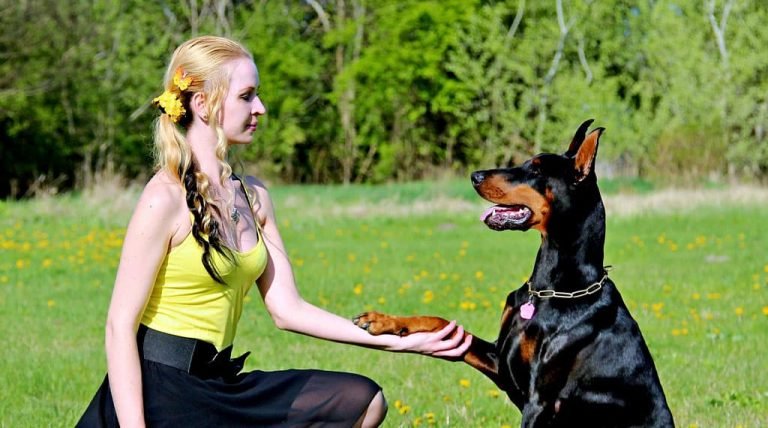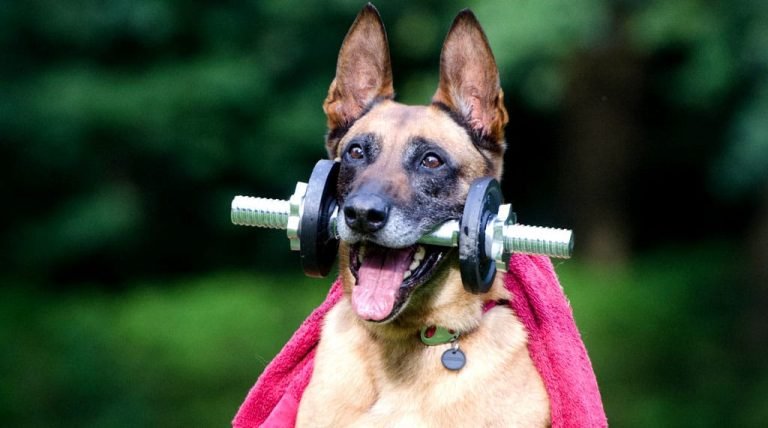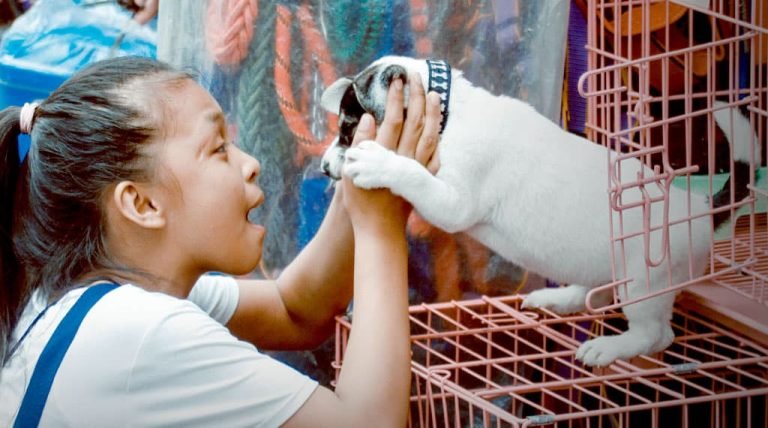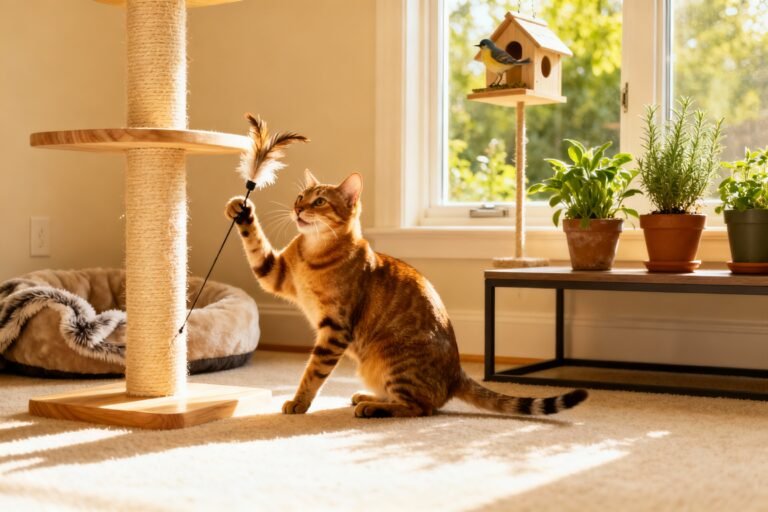“is My Cat Happy? 7 Subtle Signs You’re Doing Great”
You feed, cuddle, and worship your cat like the tiny house panther they are—but are they actually happy? Cats don’t grin like dogs, and they barely tolerate our weird human behaviors. Still, they drop plenty of hints when life’s good.
Let’s decode the subtle signs that your mysterious roommate approves of your service.
Soft Eyes and Slow Blinks

Cats communicate a lot with their eyes. When your cat looks at you with almond-shaped, relaxed eyes and gives a slow blink, that’s basically a feline “I trust you.” Consider it a kitty kiss. Don’t blink first though—kidding.
Share a slow blink back and see if they return it. How it looks: Soft eyelids, no intense staring, slow closure and reopening of the eyes. What it means: Safety, trust, and emotional comfort.
When the Blink Turns Into a Stare
Intense, unblinking eyes can mean arousal or overstimulation. If the pupils dilate and the body gets stiff, your cat may feel on edge. Shift to calmer vibes—less noise, fewer sudden moves, and maybe end the petting.
The Purr… and Its Cousins
Yes, a steady purr usually screams contentment.
It’s the portable motor of happiness. But cats also purr when stressed, so context matters. If your cat purrs while kneading your lap, melting into a nap, and not giving you “stop now” signals, you’re doing great. Bonus sounds that mean good things:
- Chirps and trills: Friendly greetings, especially during meal times or reunions.
- Soft “brrp” noises: Social invitations—“Follow me” or “Check this out.”
Purr + Body Language = Truth
Match the purr with posture.
Relaxed paws, tucked paws, or a loaf shape = content. Tail flicking hard, ears back, or tense shoulders = the purr might be self-soothing, not happy.
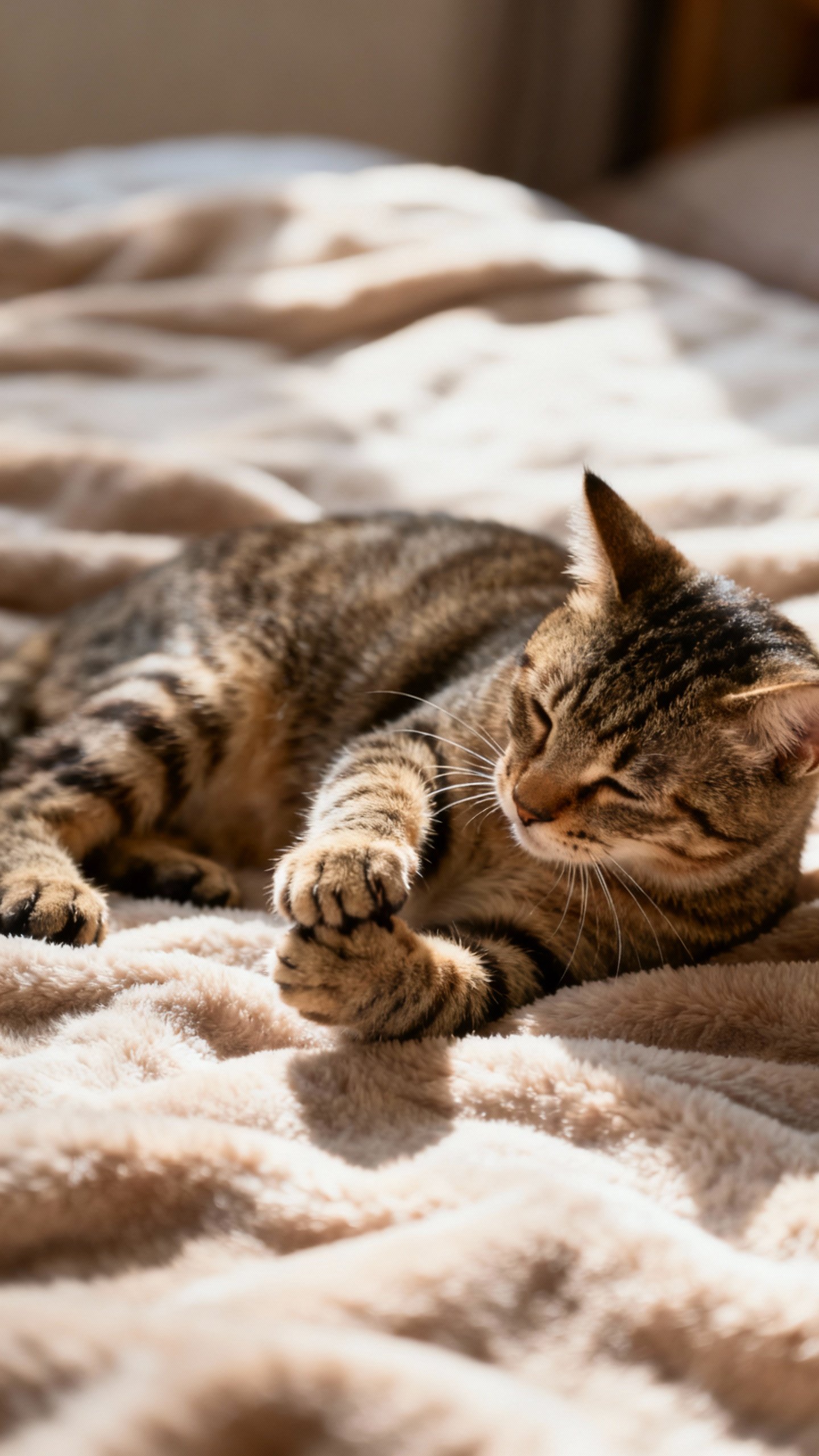
Play That Feels Like a Ritual
Happy cats play. They stalk toys, bunny-kick, and sprint like they’re auditioning for a car commercial.
If your cat initiates play at consistent times (hello, 7 a.m. zoomies), they feel secure enough to express natural behaviors. Look for:
- Regular zoomies: Short bursts of energy mean they feel safe to let loose.
- Stalking and pouncing on toys: Healthy prey-drive behavior.
- Self-play: Tossing a toy around solo? Confidence unlocked.
Set Them Up for Joy
Rotate 3–5 toys weekly so nothing gets boring. Schedule two 10-minute play sessions a day.
Use a wand toy to mimic prey: move it away from them, not toward them. They’re hunters, not security guards.
Choosing to Be Near You (On Their Terms)
Cats don’t need constant touch to show affection. If your cat follows you from room to room, sits near you (or on the laptop—classic), and seeks proximity without demanding petting 24/7, they feel bonded and safe. Affection green flags:
- Head bunts and cheek rubs: Scent-marking you as “mine.” Cute, possessive, perfect.
- Slow approach with tail up: Tail up like a question mark = confident and friendly.
- Kneading: Comfort behavior rooted in kittenhood.Your thighs are now a memory foam bed, FYI.
Respect the “No Thanks”
They walk away mid-pet? That’s not rejection—it’s boundaries. Good relationships need consent, even in Catland.
IMO, a cat that says “enough” feels safe with you.
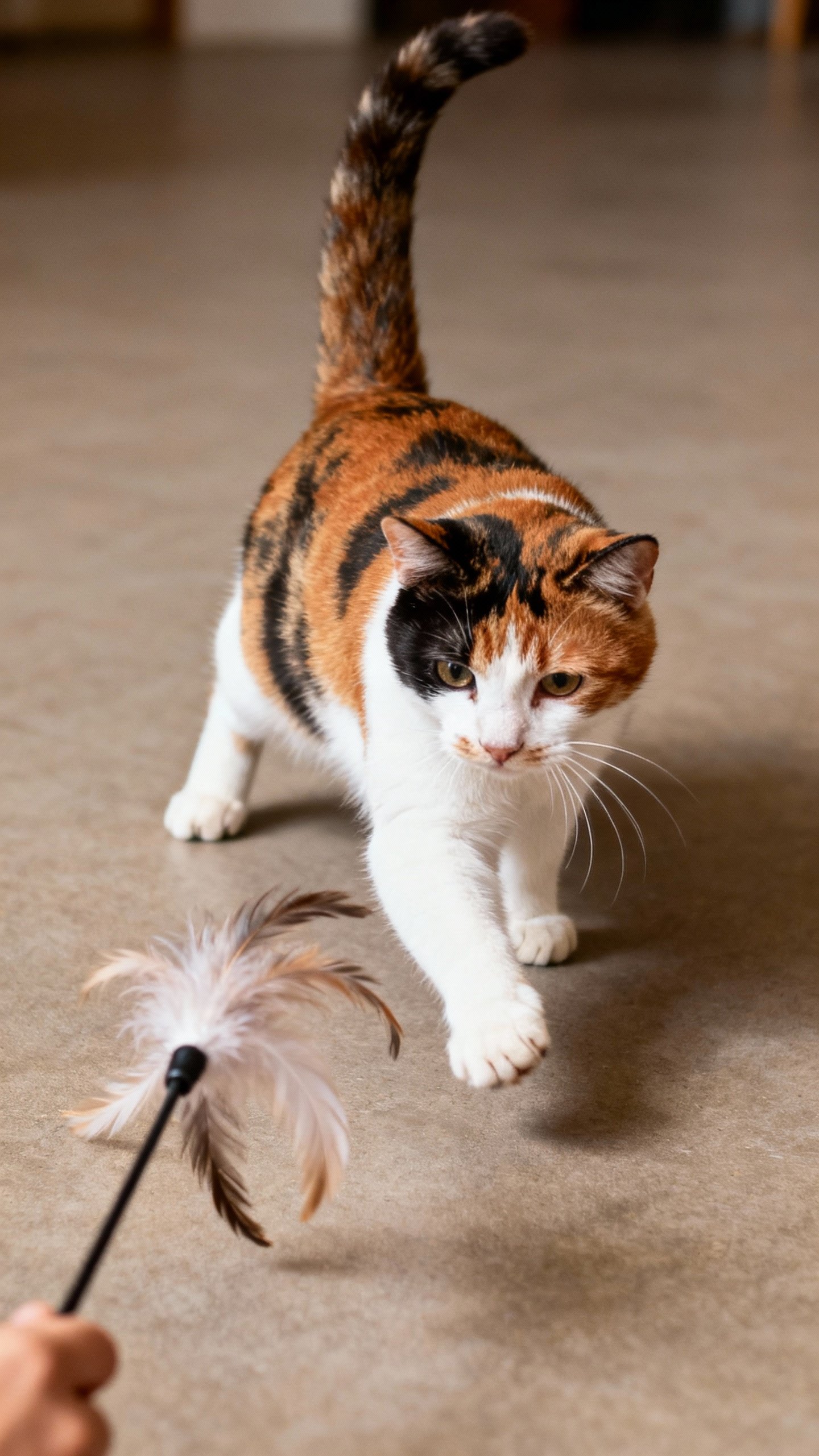
Balanced Eating, Grooming, and Litter Habits
Happy cats usually follow predictable routines. They eat well (not frantically), groom regularly, and use the litter box without drama. Stability = security. Signs you’re on the right track:
- Steady appetite: Regular meals, healthy interest in food, no sudden changes.
- Glossy coat: Consistent grooming keeps fur sleek and skin healthy.
- Chill litter box behavior: No yowling, hovering, or box avoidance.
When Routine Breaks Down
Any sudden change—overeating, hiding food, mats forming in the coat, or missing the litter box—deserves a vet check.
Cats hide discomfort. Early visits save heartache (and carpets).
Curiosity Without Fear
A content cat explores their environment calmly. They investigate new objects, sniff guests, and perch on windows like tiny security cameras.
They don’t bolt at every sound—startle, maybe, but recover quickly. Curious confidence shows up as:
- Window watching: Bird TV subscriptions are totally free entertainment.
- Gentle investigating: Sniffing new boxes, bags, and furniture without panic.
- Resting in the open: Napping in exposed spots signals deep trust.
Make Exploration Safe
Add vertical spaces (cat trees, shelves), cozy hideaways, and scratching posts. Rotate window perches. Enrich their world so curiosity pays off.
Sleepy Sprawls and Comfortable Positions
Cats sleep a lot.
But how they sleep tells you everything. A cat that sprawls belly-up, side-stretches, or loafs with relaxed shoulders feels safe. They’re basically saying, “Wake me for snacks or don’t—dealer’s choice.” Sleepy happiness hints:
- Belly exposure: Not always an invite to pet, but a huge trust signal.
- Side sleeping with twitchy paws: Deep sleep and dreamland adventures.
- Choosing sleep spots near you: Attachment without clinginess.
How to Keep the Good Vibes Going
You don’t need a PhD in meow to maintain a happy cat.
Just respect their rhythm and offer variety. Try this simple routine:
- Two structured play sessions a day (morning and evening).
- Meal times at consistent hours—puzzle feeders for enrichment.
- Daily affection on their terms—watch for slow blinks and head bunts.
- Weekly toy rotation and monthly new textures (paper bags, crinkle tunnels).
- Regular vet checks and dental care—prevention beats panic, IMO.
FAQ
My cat doesn’t like being held. Are they unhappy?
Not at all. Many cats hate being restrained but still love closeness.
If your cat sits near you, follows you, or head-butts you, they’re happy. Offer lap time without forcing it and let them choose the distance.
What if my cat never purrs?
Some cats purr quietly or rarely. Focus on body language: slow blinks, relaxed posture, tail-up greetings, and choosing to rest near you.
Happiness isn’t a decibel thing.
How do I know if the purr means pain or contentment?
Check the context. Contented purrs pair with soft eyes, loose muscles, and normal behaviors. Pain or stress purrs often come with hiding, tense bodies, rapid breathing, or appetite changes.
When in doubt, call your vet, FYI.
My cat sleeps all day. Should I worry?
Cats sleep 12–16 hours, sometimes more. Worry if they stop playing, hide, lose appetite, or avoid you.
Otherwise, let the loaf loaf.
Is kneading always a sign of happiness?
Usually, yes. Kneading shows comfort and contentment. Add a blanket to protect your legs from those needle toes.
If kneading turns frantic or paired with drooling and zoning out, it can be self-soothing during stress—watch the overall vibe.
Do treats make cats happier or just heavier?
Both can happen. Use tiny, high-value treats during play or training. Keep treats under 10% of daily calories and put the rest of the joy into play, routines, and enrichment.
Conclusion
Your cat won’t write a Yelp review, but they do rate you in blinks, bunts, and bedtime choices.
If you see soft eyes, easy play, comfy naps, and curious exploring, congrats—you’re crushing it. Keep life predictable, fun, and respectful, and your tiny tiger will stay happy. And yes, you deserve a treat too.


